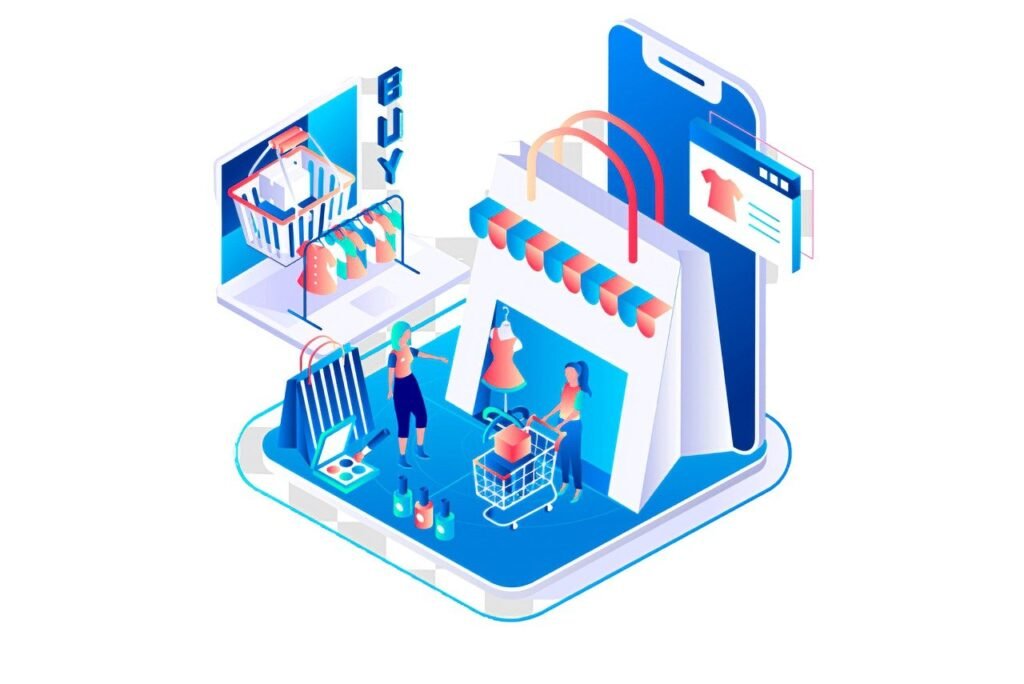This Article has been revised, edited and added to, by Poulomi Chakraborty.
- Gamification and Consumer Engagement: A Deep Dive
- Understanding Engagement Through Gamification
- The Psychological Pull of Rewards
- Strategic Implementation of Gamification for Startups
- Tailoring Gamification to User Preferences
- Leveraging Minimal Viable Products (MVPs) for Gamification
- Creating a Narrative Around Gamification
- Integrating Technology and Tools
- Continuous Improvement and Innovation
- Comparing Gamification to Traditional Engagement Strategies
- Enhancing Customer Loyalty Through Gamification
- The Role of Emotional Investment in Loyalty
- Sustaining Interest Over Time
- Comparing Traditional Loyalty Programs to Gamified Ones
- Cultivating a Community Around Gamified Experiences
- Personalizing the Gamification Experience
- Utilizing Tiered Reward Systems
- Incorporating Real-Time Feedback Mechanisms
- Fostering Brand Loyalty Through Educational Gamification
- Monitoring and Adapting Gamification Strategies
- Leveraging Gamification for Brand Advocacy
- Strategies and Tools for Integrating Gamification into Digital Marketing
- Measuring the Success of Gamification in Digital Marketing
- Conclusion: The Transformative Power of Gamification in Digital Marketing
In today’s digital age, standing out in the crowded marketing landscape is a significant challenge for brands across industries. Gamification, the technique of integrating game mechanics into non-game environments, has emerged as a powerful tool to captivate audiences and foster brand engagement. By leveraging elements like competition, rewards, and interactive challenges, marketers can transform mundane interactions into exciting and memorable experiences. This article explores how gamification enhances digital marketing efforts, making campaigns not just seen, but also interactively experienced by the target audience.
Gamification and Consumer Engagement: A Deep Dive

At the heart of digital marketing success is the ability to engage consumers. Engagement, however, is not just about catching the eye of your audience; it’s about holding their attention and encouraging active participation. This is where gamification excels, turning passive observers into active participants.
Understanding Engagement Through Gamification
Engagement in marketing is often measured by the amount of time and interaction a consumer has with a brand’s digital content. Traditional methods may grab attention temporarily, but gamification ensures that this attention is sustained. By integrating game mechanics such as points, badges, leaderboards, and challenges into marketing strategies, brands can create a sense of achievement and urgency among users.
Case Study: The Power of Points and Leaderboards
Consider a digital campaign for a new line of fitness apparel. Instead of simply showcasing the products through standard ads, the company could develop a challenge where users earn points for each piece of content they interact with or for fitness challenges they complete using the app connected to the brand. These points could then be displayed on a leaderboard, fostering a competitive environment among users. Such a setup not only promotes the product but also encourages repeated engagement, increasing brand exposure and building a community around the product.
This kind of interaction taps into the competitive human nature, making the engagement deeper and more meaningful. It transforms the consumer’s role from a passive recipient of information to an active participant in a brand’s narrative.
The Psychological Pull of Rewards
Rewards are a central element in gamification and serve as a crucial motivation for continued engagement. The anticipation of a reward stimulates the release of dopamine in the brain, creating a sense of pleasure and accomplishment that is associated with the brand’s interaction.
Example: Reward-Based Email Marketing Campaigns
Imagine an email marketing campaign that rewards customers for opening emails, clicking on links, or making purchases. Each action could accumulate points that lead to discounts or special offers. Such a campaign not only increases the open rates and click-through rates of emails but also enhances the overall customer experience by adding a layer of excitement and reward to the interaction.
Strategic Implementation of Gamification for Startups
For startup founders, the adoption of gamification in digital marketing must be strategic and methodically planned to ensure maximum impact with limited resources. The initial focus should be on deeply understanding the target audience, including their preferences, behaviors, and motivations. This understanding will guide the selection and customization of gamification elements that resonate strongly with potential customers.
Tailoring Gamification to User Preferences
Startups have the unique advantage of agility, allowing them to quickly adapt and tailor their gamification strategies in response to real-time user feedback and behavioral data. For instance, if a startup observes that its user base is particularly motivated by social recognition, integrating features like public leaderboards or user-generated challenges can be highly effective. Conversely, if privacy and personal achievement are more valued, providing personalized progress trackers or private badges would be more appropriate.
Leveraging Minimal Viable Products (MVPs) for Gamification
Startups can use the MVP approach not just for product development but also to test gamification strategies. By initially implementing a basic version of a gamified element, such as a simple points system for user actions, startups can gather valuable data on its effectiveness and user engagement. This approach allows for iterative testing and refinement based on user feedback and engagement metrics, ensuring resources are used efficiently and the gamification strategy evolves in alignment with user needs and business goals.
Creating a Narrative Around Gamification
Integrating a compelling narrative or theme into the gamification strategy can significantly enhance user engagement. This involves creating a storyline that users can follow and participate in as they interact with your brand. For a startup, this could mean developing a backstory for the brand that ties into the gamification elements, making the interaction more immersive and meaningful. For example, a startup selling eco-friendly products might create a gamification strategy that involves users in a virtual journey towards saving the planet, with each purchase or eco-friendly action advancing the storyline.
Integrating Technology and Tools
To effectively implement and manage gamification strategies, startups should consider utilizing affordable gamification platforms that offer scalability and customization. These tools can help automate the tracking of user activities, manage rewards systems, and provide valuable analytics on the gamification’s impact on user engagement and retention. Startups should look for platforms that offer integration with their existing CRM and marketing tools to ensure a seamless experience for both users and administrators.
Continuous Improvement and Innovation
As the startup grows, the gamification strategy should also evolve to incorporate more sophisticated techniques and technologies. This might include using artificial intelligence to personalize challenges and rewards or integrating augmented reality for more immersive experiences. Continuous innovation in gamification will not only sustain the initial engagement but also keep the strategy fresh and exciting for returning users.
Comparing Gamification to Traditional Engagement Strategies
While traditional digital marketing strategies rely heavily on visual and content appeal, gamification introduces an interactive element that can be more effective in maintaining consumer interest. Traditional methods such as banner ads, blog posts, and static videos, while useful, often fail to engage users beyond a superficial level. Gamification, by contrast, immerses users in an experience that requires active participation, decision-making, and interaction, leading to deeper engagement and a stronger emotional connection with the brand.
This comparative advantage is evident in the enhanced metrics of customer retention, time spent on the platform, and user interaction rates associated with gamified marketing strategies.

As the CEO of DealA, a thriving coupon platform, standing out in the digital economy requires constant innovation and adoptive strategies. To carve our niche, we’ve adopted some unique digital marketing strategies.
First, we implemented ‘gamified savings,’ where users accumulate points with each discount they use, creating a more engaging experience. This has led to a consistent 35% rise in user retention.
Second, we’re in the process of leveraging AI to deliver personalized coupon recommendations based on shopping preferences, which is showing promising initial results. Tracking results and optimizing processes is critical.
We use a detailed analytics dashboard to monitor metrics like engagement rates, click-through rates, and conversion rates on a real-time basis. These insights guide our strategic decisions, including when and how to optimize our efforts.
For instance, we’ve noticed that personalized email campaigns perform best mid-week, leading us to adjust our email schedule accordingly.
Oleg Segal, CEO & Founder of DealA.com
Enhancing Customer Loyalty Through Gamification
Building on the engagement foundation, gamification plays a pivotal role in fostering customer loyalty—a crucial asset for any brand. In the digital marketplace, where competition is fierce and alternatives are just a click away, maintaining customer loyalty requires more than just quality products and services; it requires creating emotional connections and memorable experiences.
The Role of Emotional Investment in Loyalty
Gamification strategies often involve emotional investment from users, which is a powerful driver of loyalty. By participating in challenges, achieving goals, and receiving rewards, users don’t just interact with a brand; they feel a part of the brand’s story. This emotional investment can significantly heighten the sense of loyalty towards a brand.
Example: Loyalty Programs Reinvented with Gamification
Take, for example, a loyalty program of a coffee shop that uses a mobile app to gamify customer visits. Instead of the traditional punch card system, customers earn virtual badges for different types of purchases or for visiting at certain times of the day. These badges can then be exchanged for free items or discounts. More importantly, they can unlock special statuses that come with exclusive benefits, like invitations to taste new blends before they are released to the public.
Such gamified loyalty programs do more than just incentivize repeat business; they turn routine transactions into fun and engaging activities, making every visit something to look forward to.
Sustaining Interest Over Time
Gamification is not just about a one-time engagement, but about creating a series of interactions that keep users coming back. Regular updates, new challenges, and evolving rewards ensure that the gamified elements remain exciting and relevant, keeping the user experience fresh.
Continuously Evolving Challenges
A dynamic gamification strategy requires that challenges and rewards evolve in line with user expectations and market trends. For instance, a health and wellness app might start with simple challenges like tracking water intake but can gradually introduce more complex tasks like weekly meal planning or group fitness challenges. This evolution can sustain user interest over months and even years, deepening the engagement with each new level of difficulty.
Comparing Traditional Loyalty Programs to Gamified Ones
Traditional loyalty programs often rely on linear, transaction-based rewards systems: spend a certain amount, get a certain reward. While effective, this approach doesn’t necessarily create a deep emotional connection or a memorable experience. Gamified loyalty programs, on the other hand, make the process of earning rewards fun and exciting. They encourage not just more purchases but more meaningful interactions, which are crucial for building lasting customer relationships.
Cultivating a Community Around Gamified Experiences
For startups, building a loyal customer base is more than just encouraging repeat business; it involves creating a community where members feel valued and connected. Gamification can facilitate this by fostering interactions not just between the user and the company, but also among the users themselves. By designing gamification elements that encourage users to engage with each other—through forums, shared challenges, or cooperative tasks—startups can create a sense of belonging and community. This can be particularly effective in industries where peer support and interaction add value to the user experience, such as fitness, learning, and gaming.
Personalizing the Gamification Experience
Startups have the unique opportunity to leverage data-driven insights to personalize the gamification experience. By analyzing user behavior and preferences, startups can tailor challenges, rewards, and interactions to fit individual user profiles. This personalized approach not only increases the effectiveness of the gamification efforts but also makes the users feel uniquely recognized and valued, enhancing their loyalty to the brand.
Utilizing Tiered Reward Systems
Implementing a tiered reward system can create a more engaging and motivating experience that encourages ongoing participation and loyalty. As users progress through different levels of engagement, they unlock increasingly valuable rewards. Each tier might offer different benefits, such as exclusive content, special discounts, or early access to new products. This strategy not only rewards existing behavior but also motivates continued engagement and investment in the brand.
Incorporating Real-Time Feedback Mechanisms
Real-time feedback is crucial for maintaining user interest and engagement in gamified systems. Immediate rewards and recognition for completing tasks or achieving goals can significantly enhance the user experience. For example, a startup could implement a system where users receive instant notifications of rewards and badges as soon as they earn them, along with suggestions for new challenges they might enjoy. This not only keeps the users engaged but also helps maintain a dynamic interaction with the brand.
Fostering Brand Loyalty Through Educational Gamification
For startups, particularly those in technology, health, or finance, educating customers about how best to use their products or services can be a significant challenge. Gamification can turn this educational process into an engaging activity that enhances product understanding and user competence. By gamifying the learning process—through quizzes, interactive tutorials, and problem-solving missions—startups can ensure that customers not only understand the product better but also feel more confident and satisfied with their purchase, thereby increasing loyalty.
Monitoring and Adapting Gamification Strategies
The dynamic nature of startups requires that gamification strategies be regularly evaluated and adapted based on performance data and user feedback. Startups should establish metrics to assess the impact of gamification on customer loyalty and retention, such as tracking participation rates in gamified activities, monitoring changes in purchase behaviors, and measuring the frequency and depth of user engagement. By continually refining the gamification elements, startups can ensure that they remain effective and relevant, keeping the user experience fresh and engaging.
This deeper level of engagement achieved through gamification leads to higher rates of customer retention and more enthusiastic brand advocacy. Customers are not just loyal because they get rewards; they are loyal because they are emotionally invested in what feels like a rewarding and enjoyable journey with the brand.
Leveraging Gamification for Brand Advocacy

As gamification strengthens customer loyalty, it also sets the stage for transforming satisfied customers into enthusiastic brand advocates. Brand advocacy goes beyond mere loyalty; it involves customers actively promoting and recommending the brand to others, often leveraging their social networks to influence potential buyers.
Turning Customers into Ambassadors
The natural progression from customer engagement and loyalty to advocacy is particularly smooth when gamification is involved. Gamification can incentivize not only participation and purchases but also social sharing and referrals. This can dramatically amplify a brand’s reach and credibility, as recommendations from friends and family are often more trusted than traditional advertising.
Encouraging Social Sharing through Gamification
Consider a scenario where a mobile game app rewards users with in-game currency or exclusive content for sharing their achievements on social media or inviting friends to play. This not only increases the game’s visibility but also leverages users’ personal networks to attract new players. The sense of community and shared experiences fostered through such strategies enhances users’ connection to the brand, making them more likely to advocate on its behalf.
The Power of User-Generated Content
User-generated content (UGC) is a goldmine for marketers, and gamification can significantly boost its creation and dissemination. When users are rewarded for creating content that features a brand, they are more motivated to produce high-quality, engaging material that resonates with both the brand’s ethos and their personal networks.
Example: Gamified UGC Campaigns
Imagine a fitness apparel brand that launches a challenge where customers are encouraged to post photos in their gear along with a unique hashtag to win a year’s supply of products. Such campaigns not only encourage participation but also create a plethora of authentic, relatable content that can influence potential customers more effectively than standard brand-driven advertising.
Sustaining Advocacy with Continuous Engagement
For advocacy to be sustained, engagement must be maintained. This means that gamification strategies need to be continually refreshed and aligned with user interests and market trends. Regular updates, new features, and timely rewards keep the user experience engaging and ensure that brand advocates remain motivated to share their positive experiences.
Comparing Gamified Advocacy to Traditional Methods
Traditional methods of fostering brand advocacy often rely on static rewards or occasional outreach efforts. In contrast, gamified advocacy creates a dynamic and ongoing interaction loop between the brand and its advocates. This approach not only feels more genuine but is also more engaging and fun, making it significantly more effective in today’s fast-paced, entertainment-driven market.
Gamified systems provide a platform for users to feel recognized and valued, not just for their purchases but for their role in promoting the brand. This recognition is crucial for converting regular customers into active advocates, who naturally enhance the brand’s visibility and trustworthiness through their enthusiastic participation.

Related: Check out our free SEO suite

Strategies and Tools for Integrating Gamification into Digital Marketing
To effectively harness the power of gamification in digital marketing, it’s essential to employ strategic planning and utilize the right tools. This section delves into practical strategies for embedding gamification elements into various aspects of digital marketing, as well as highlighting tools that can facilitate these integrations.
Starting with Clear Objectives
The first step in integrating gamification is to define clear marketing objectives. What specific behaviors do you want to encourage? Are you aiming to increase website traffic, boost sales, enhance user engagement, or encourage social shares? Setting clear goals will guide the design of your gamification elements to ensure they align with your overall marketing strategy.
Choosing the Right Gamification Elements
Once objectives are set, selecting the right gamification elements is crucial. These can include:
- Points Systems: Points can be used to track progress and can be exchanged for rewards.
- Badges and Achievements: These serve as symbols of accomplishment that can be proudly displayed.
- Leaderboards: They foster a competitive environment and encourage users to engage more deeply.
- Challenges and Quests: These can guide users through different activities, increasing their interaction with the brand.
Each element can be tailored to specific campaign goals and target audiences, ensuring relevance and effectiveness.
Tool Spotlight: Gamification Software Platforms
Several software platforms can help integrate these elements seamlessly into your marketing campaigns. Platforms like Badgeville or Bunchball provide comprehensive gamification services that can be customized to fit various marketing strategies. These tools offer robust analytics features to track user engagement and adjust strategies as necessary.
Creating a Reward System that Resonates
Designing a reward system that resonates with your audience is vital. Rewards should be desirable and relevant to the audience’s interests and needs. They can range from discounts and coupons to exclusive access or recognition within the community. Understanding what motivates your audience will help in crafting a reward system that truly engages them.
Example: Tailored Rewards for Different User Segments
For instance, a beauty brand might create a gamified campaign where younger demographics are rewarded with discounts on trendy new products, while older segments might prefer rewards that offer value through bundle deals or loyalty points for frequent purchases.
Incorporating Feedback Loops
Feedback loops are essential in gamification to let users know when they’ve achieved something and what they need to do next. These loops should provide immediate feedback (like visual or auditory notifications of rewards) and should be easy for users to understand and act upon.
Maintaining Engagement Over Time
To keep users engaged long-term, it’s important to continuously update and refresh gamification elements. This could involve introducing new challenges or rewards, adjusting the points system, or updating the goals to maintain alignment with user expectations and interests.
Legal and Ethical Considerations
Finally, when implementing gamification, it’s crucial to consider the legal and ethical implications, including data privacy concerns and the risk of unintentionally promoting addictive behaviors. Clear communication of terms and conditions, as well as ensuring transparency in how data is used, can help mitigate these risks.
Measuring the Success of Gamification in Digital Marketing

Once gamification strategies are implemented, it’s essential to track their effectiveness to ensure they are delivering the desired outcomes. This section will explore key metrics and tools for measuring the success of gamification within your digital marketing campaigns.
Establishing Key Performance Indicators (KPIs)
The first step in measuring success is to establish clear KPIs that align with your initial objectives. Common KPIs for gamification include:
- User Engagement: Metrics like session time, frequency of visits, and interactions per visit.
- Conversion Rates: Tracking how many users complete desired actions, such as making a purchase or signing up for a newsletter.
- Social Shares and Referrals: The number of users sharing content or referring others to participate in the gamified elements.
- Customer Retention Rates: How well the gamification elements keep customers coming back compared to non-gamified strategies.
Each of these indicators provides insights into different aspects of campaign performance and user behavior.
Utilizing Analytics Tools
To track these KPIs effectively, leveraging the right analytics tools is crucial. Tools such as Google Analytics can be used to monitor website and app engagement, while specialized gamification analytics platforms like Gametize or Octalysis provide more detailed insights into user interactions with gamified elements.
Tool Spotlight: Gamification-Specific Analytics
Platforms like BigDoor and Playlyfe offer features that allow marketers to dive deep into the data, tracking everything from point accumulation and badge achievement to detailed user progression through different gamification levels. These platforms often include dashboards that visualize data, making it easier to spot trends and adjust strategies accordingly.
Conducting User Feedback Surveys
In addition to quantitative data, qualitative insights can be incredibly valuable. User feedback surveys can help gather direct responses from participants regarding their experiences with the gamification elements. This feedback can provide deeper insights into what users enjoy or dislike, which elements are most engaging, and what could be improved.
A/B Testing
A/B testing is another effective method for measuring the impact of gamification. By running parallel campaigns — one with gamification elements and one without — you can directly compare the performance and see how much of a difference the gamified experience makes.
Long-Term Tracking
Gamification is often about long-term engagement. It’s important to track how gamification impacts user behavior over extended periods. This includes monitoring how often users return to participate in gamified activities and whether those activities lead to sustained or increased loyalty and advocacy.
Example: Real-World Impact Assessment
Imagine a scenario where a retail brand implements a points system for purchases. The brand could measure success by not only looking at the increase in purchases but also by assessing how these points influence repeat customer rates compared to a control group without points. Additionally, the brand could track redemption rates for rewards and how these correlate with customer satisfaction and increased spending.
Adjusting Strategies Based on Data
Finally, the ultimate goal of measuring the success of gamification is to refine and improve strategies. Data should not only be used to assess performance but also to inform decisions about future marketing efforts. This might involve scaling successful elements, tweaking underperforming features, or even trying new gamification techniques based on user preferences and behaviors.

One strategy you can implement is leveraging user-generated content (UGC) to enhance brand authenticity and engagement.
By encouraging customers to share their experiences, testimonials, and reviews on social media or through dedicated UGC campaigns, you can create a more genuine connection with our audience and build trust in our brand.
Utilizing interactive content formats such as quizzes, polls, and videos to increase user engagement and drive conversions. These immersive experiences capture attention and provide valuable insights into customer preferences and behaviors.
To track the results of these strategies, a combination of analytics tools such as Google Analytics, social media analytics, and CRM platforms will be used to monitor key performance indicators (KPIs) such as website traffic, engagement metrics, lead generation, and conversion rates.
Regularly analyzing these metrics can identify which strategies yield the best results and which areas need improvement.
Conduct A/B testing and experiments to optimize your digital marketing efforts further. By testing different content variations, messaging, and tactics, you can identify what resonates best with our audience and adjust our strategies to maximize effectiveness and ROI.
Marcus Clarke, Founder of Searchant
Conclusion: The Transformative Power of Gamification in Digital Marketing
Gamification has redefined traditional marketing approaches, introducing a dynamic and interactive layer that not only captures but sustains consumer interest. By weaving game mechanics such as points, badges, and challenges into marketing strategies, brands can enhance engagement, boost loyalty, and transform customers into vocal brand advocates. The success stories of Nike, Starbucks, M&M’s, and Duolingo illustrate the versatility and effectiveness of gamification across various industries—from fitness and retail to confectionery and education.
These case studies highlight that when gamification is thoughtfully integrated with clear objectives and a deep understanding of target audiences, it can significantly enhance the digital marketing landscape. Brands can foster a new level of interaction and participation, turning mundane activities into engaging and enjoyable experiences that drive business growth and customer satisfaction. As we move forward, gamification is poised to become an even more integral part of successful digital marketing strategies, reimagining how brands connect with their consumers in an increasingly digital world.
Read Next
- Factors Influencing Startup SEO Budget Allocation
- Allocating Resources: Creating a Comprehensive SEO Budget Plan
- Using Google Autocomplete for Startup Keyword Insights
- Keyword Research for Startup Webinars: Driving Registrations
- Startup SEO Keyword Trends: Predictions for Future Search Behavior






















Comments are closed.